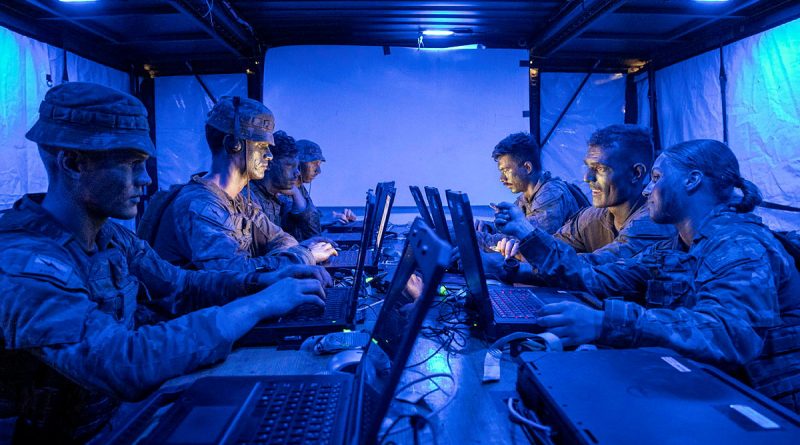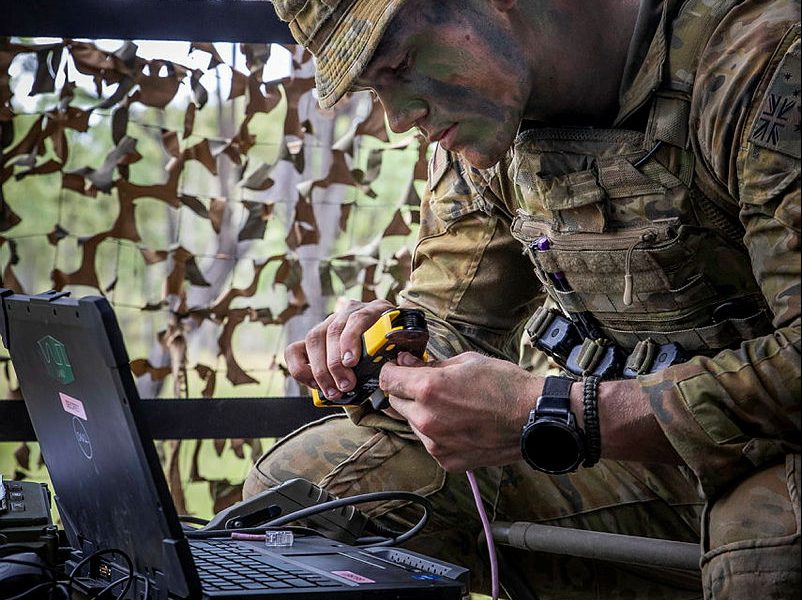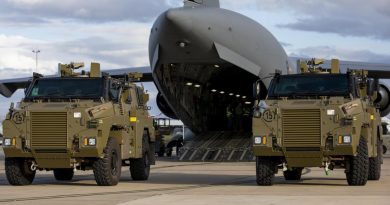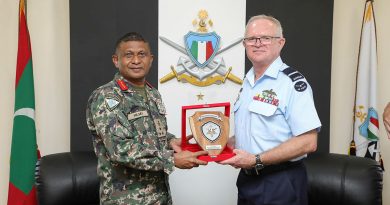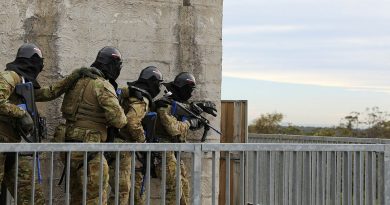Signallers practise the art of invisibility

As technology advances, it’s harder for a brigade headquarters to stay unseen on the battlefield – that’s why the art of invisibility has become as crucial as firepower.
CAPTION: Soldiers and officers of Headquarters 3rd Brigade and 3rd Combat Signal Regiment operating a command post during Exercise Brolga Walk at Townsville Field Training Area, Queensland. Story by Corporal Luke Bellman. Photos by Trooper Dana Millington.
Stealthy moves, silent communication and adaptive camouflage were used by 3rd Brigade Headquarters during Exercise Brolga Walk to reduce their signature and improve survivability.
The headquarters set up communications architecture to emit less radio traffic, and moved nodes every 24 to 48 hours when there was risk of compromise.
Captain Lachlan Findlay, of the 3rd Brigade operations cell, explained some of the tactics being employed in the field.
“We have one node on the ground at any one time enabling the other node to move location and re-establish itself,” he said.
“Once communications are re-established, we can then take back control over the current fight, enabling the next node to conduct its step-up into a new location.”
CAPTION: An Australian Army signaller from the 3rd Combat Signal Regiment sets up a command post terminal during Exercise Brolga Walk at Townsville Field Training Area.
The headquarters minimised visibility by camouflaging vehicles while leveraging terrain and vegetation, making the nodes appear smaller and less identifiable.
Intelligence analyst Private Stewart Hunter, who assisted with battle tracking and updating intelligence reports, said they relocated fast when needed.
“We work on a short-notice-to-move timeframe. When we need to move, the signallers start drawing down all their equipment and only leaving key services available,” he said.
“We pack up all the camouflage nets and pretty much get ready to break position or break hard into a new location.”
Captain Findlay said the ability to remain undetected on the battlefield had become increasingly critical because of advancements in surveillance and the use of precision-guided munitions.
.
.

.
.

